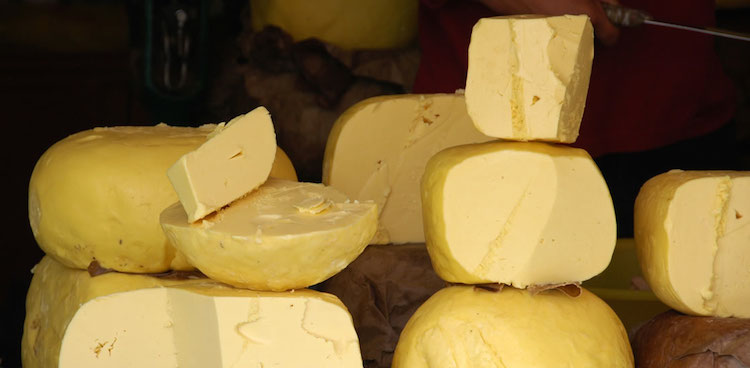
In the mountains of Tibet, yaks are living the good life. They breath unpolluted air, drink from mountain streams, and spend their days feasting on fresh grass and wildflowers. And the view’s not bad, either.

Photo Credit: The Longest Way Home
On top of their incredible lifestyle, yaks also produce a truly unique milk. The milk as described by Jonathan White of Bobolink Dairy is “rich, sweet, and fragrant from the wildflowers that made it.” Though you may think yak’s milk and yak’s cheese would be as strong and pungent as their unkempt fur and semi-feral attitudes, the flavor is actually quite delicate. Jonathan White explains:
“At first taste, the cheese is disarmingly mild, with a clean, delicate milky flavor, which is totally different from sheep, cow, goat or mares’ milk cheeses. After about 30 seconds on the palate, the taster becomes aware of a growing complex of herbal notes, with the flavor continuing to develop and building to a crescendo in about 120 seconds. The afternotes are a clean,pleasant, fading collection of milky, herbal and sharp-sweet.”

Photo Credit: Wild China
In addition to its flavor, yak cheese contains higher levels of healthy fats when compared to cow’s cheese. It is rich in omega-3 fatty acids and conjugated linolecic acid (CLA), a type of healthy fat known for its health benefits. This is because of their natural and varied free-range diet. The milk is heated and ripened in copper vats and molded into 10-12 pound wheels. The cheese is then dry-cured in Tibetan red salt, taken from a nearby dried ocean bed, and aged.
In Tibet, the milk is most frequently used for a smoked cheese called chhurpi, but it wasn’t until recently that Tibetans even began to make cheese, instead using yak’s milk mostly for the butter. “There’s not much taste for cheese-eating on the Tibetan plateau,” says White. He was sent to Tibet by a New York organization to develop an export-quality cheese that would give the Tibetan nomads a chance to earn a profit on their surplus milk. The Tibetan palate is not accustomed to cheese and for now they tolerate it, knowing that they can make a large profit. Although, White notes one exception. For one of the festivals, he whipped up a quick batch of yak mozzarella, or “yakkarella” as he named it, that was well received by the locals. However, unable to be refrigerated during transport through the mountains, the mozzarella will unfortunately remain a curiosity.>

Photo credit: Danielle Fay
Because of the location and the fact that yaks only produce as much milk as goats do, getting yak cheese is not easy or cheap. However you can find it being incorporated into the menus of some American restaurants like Aldo Sohm Wine Bar in Manhattan, where Chef Eric Ripert is currently offering Truffle Pasta with grated yak cheese, as well as selling it by the ounce.

Photo Credit: Image courtesy of Aldo Sohm Wine Bar via Grubstreet.com



